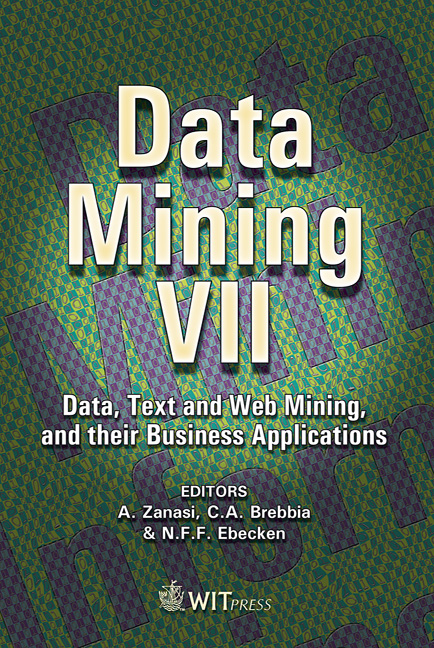The CLUSTER3 System For Goal-oriented Conceptual Clustering: Method And Preliminary Results
Price
Free (open access)
Volume
37
Pages
10
Published
2006
Size
467 kb
Paper DOI
10.2495/DATA060091
Copyright
WIT Press
Author(s)
W. D. Seeman & R.S.Michalski
Abstract
A conceptual clustering program CLUSTER3 is described that, given a set of objects represented by attribute-value tuples, groups them into clusters described by generalized conjunctive descriptions in attributional calculus. The descriptions are optimized according to a user-designed multi-criterion clustering quality measure. The clustering process in CLUSTER3 depends on a viewpoint underlying the clustering goal, and employs the view-relevant attribute subsetting method (VAS) that selects for clustering only attributes relevant to this viewpoint. The program is illustrated by a simple designed problem and by its application to clustering of US Congressional voting records. The ongoing research concerns application of CLUSTER3 to large and complex datasets such as collections of web pages. Keywords: conceptual clustering, unsupervised learning, goal-oriented clustering, pattern recognition, attributional calculus, view-relevant attribute subsetting. 1 Introduction Clustering analysis is a fundamental way of gleaning knowledge from data when little is known about the organization of the observations recorded in the data. Most clustering methods group objects into clusters solely on the basis of the relationship of the observations to each other, and output results as collections or hierarchies of clustered observations. They typically take descriptions of objects in the form of attribute-value vectors and group the descriptions on the basis of
Keywords
conceptual clustering, unsupervised learning, goal-oriented clustering,pattern recognition, attributional calculus, view-relevant attribute subsetting.





